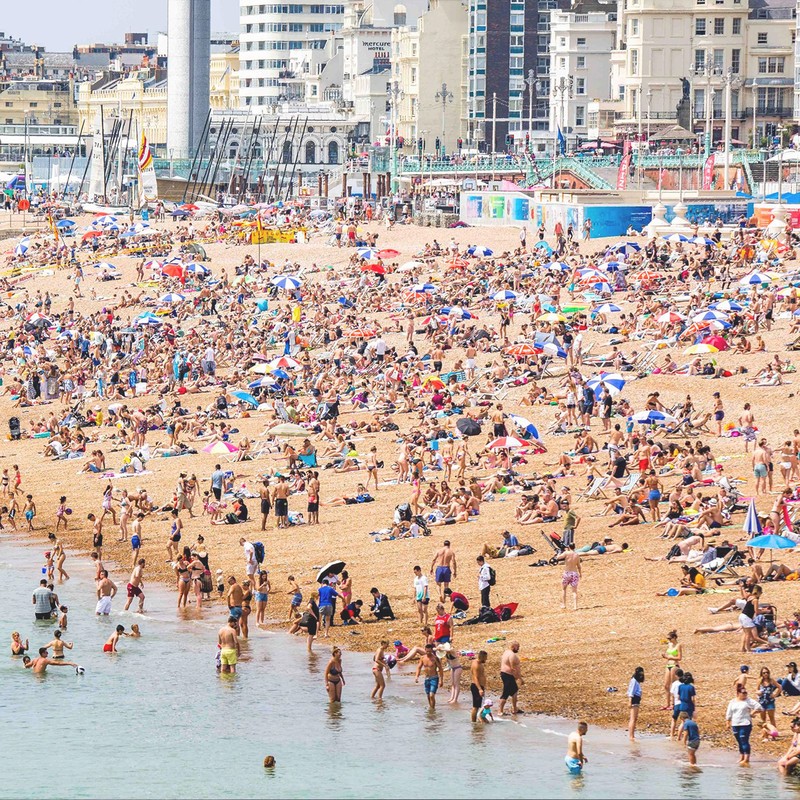Should We Be Worried About Britain’s Heatwave?
Britain has been basking in the heatwave of a lifetime – literally, the last time it was this hot was 1976. Flares were in fashion, the Rolling Stones were on tour, and the Prime Minister had just stepped down, announcing his ‘exhaustion’ in the wake of an EU referendum – a world barely recognisable today…
In 2013, a survey found Britons rated the summer of 1976 the best they’d ever had. Jump to 2018 and once again we’ve been enjoying a vitamin-D-fuelled summer of love. Our World Cup victories seemed all the more enchanting as thousands watched across beer gardens and Hyde Park, drinking in the 30°C rays with an ice-cold pint. Somehow, even the chaos of Brexit has faded behind a warm wave of sunshine, barbeques – and admittedly, a considerable amount of rosé.
But as we reach the sixth week of high temperatures, alarm bells are beginning to ring. What we expected to be the classic British heatwave – a glorious seven days of sweating on the tube, and enough sunburn to last you the rest of a cloudy 19°C summer – has developed into something more significant. We’re beginning to question, when will I be able to sleep under my duvet again? Will I ever get to wear that entirely season-inappropriate jacket I bought in June?
And we’re not the only ones. A quick look at the global weather news reveals the entire northern hemisphere is melting under record-breaking temperatures worldwide. From Canada to Japan, countries north of the equator have been experiencing abnormally hot weather. In Oman, residents of the town Quriyat struggled through a blistering day and night, where temperatures did not fall below 42.6°C in the hottest 24-hour period in recorded history.
So, barbeques and rooftop bars aside – what on earth is going on? With forecasters warning that the heatwave may last another fortnight, the impact of the heat is starting to feel a little more stifling. The fires on Saddleworth Moor, despite dipping out of headlines, were only extinguished a week ago. Conditions were so dry it took firefighters 25 days to put out the blaze. As Northern Ireland begin to lift their hosepipe ban, another is going into place as north-west England attempts to deal with its water shortages.
In Canada, authorities are estimating at least 70 people have died as a result of the heatwave felt across Quebec, as the elderly and those without air-conditioning struggle against oppressive temperatures. Sweden has asked for international help dealing with enormous fires across the arctic circle and in Japan, the rescue efforts for severe flooding have been hampered by heatwave temperatures, causing more than 22,000 people to be admitted to hospital with exhaustion and heatstroke.
These are just the instances we can see. So what do the continued high temperatures mean long-term? Is it just freak weather, or are we beginning to see the effects of global warming in our day-to-day lives?
Experts remain cautious of attributing the heatwave to climate change too quickly, with many drawing attention to the impact of the jet stream and changing sea temperatures in the North Atlantic as other key factors behind the endless days of sunshine.
In meteorological terms, the heat is indeed linked to the jet stream – bands of wind blowing across the upper atmosphere, playing a crucial role in conditions. Currently, a weaker jet stream means high pressure in the atmosphere is able to linger for an extended period, leaving the UK basking in 30°C heat for weeks on end.
Although the jet stream does experience natural fluctuations, some meteorologists suggest that greenhouse gases raising the global temperature are causing it to behave more erratically. The result: extreme weather events, like this February’s bitter ‘Beast from the East’ snow spell, and the record-breaking heatwave currently gripping parts of the northern hemisphere. And whilst no one can be absolutely certain about what is causing this summer’s heatwave, meteorologists seem to confirm one thing – if global warming continues, heatwaves are likely to become longer, hotter and more frequent.
So, what can be done? The jury’s still out on whether climate change is the reason Anglesey looks more like the Algarve, but there’s plenty you can be doing in the meantime to reduce your impact on a parched Britain. As the dry weather causes regional water shortages around the UK, try to take shorter showers and avoid using your bath and hosepipe. Similarly, be as cautious as possible when smoking or barbequing outdoors, and never leave glass bottles out on the grass – all these things risk the chance of wildfire.
Long-term, there’s no harm in doing your bit to reduce your carbon footprint – heatwave causing or otherwise. Limiting air travel, reducing meat consumption and changing energy providers to those selling renewable power are all things you can do to limit your own impact on the environment.
DISCLAIMER: We endeavour to always credit the correct original source of every image we use. If you think a credit may be incorrect, please contact us at info@sheerluxe.com.


